April 4th is National Ramen Noodle Day! To celebrate, I made a Ramen Burger, which I’ve never eaten before. Yeah, I know it was a thing back whenever—but since I’ve never been one to chase trends, I just thought I’d try it now. I wonder if it’s even available anymore?
I also did an instant ramen taste testing; specifically a Cup Ramen International Edition. See how I did—I’ll bet you’ve never had most of these!
In case you’re wondering, credit for the Ramen Burger should go to a NY chef named Keizo Shimamoto, who started the craze back almost 8 years ago. I guess it never caught on enough to join the mainstream, but it’s kind of a fun thing to make on your own, and an excuse to use the griddle if you’re going to fry some burgers anyway.
Want to try? First make some instant ramen, flavor it with the packets it came with, and drain all the soup. Cool it down, and pour seasoned and beaten eggs on the noodles. The eggs will keep the noodles together in a clump so you can shape it into your burger “buns”.
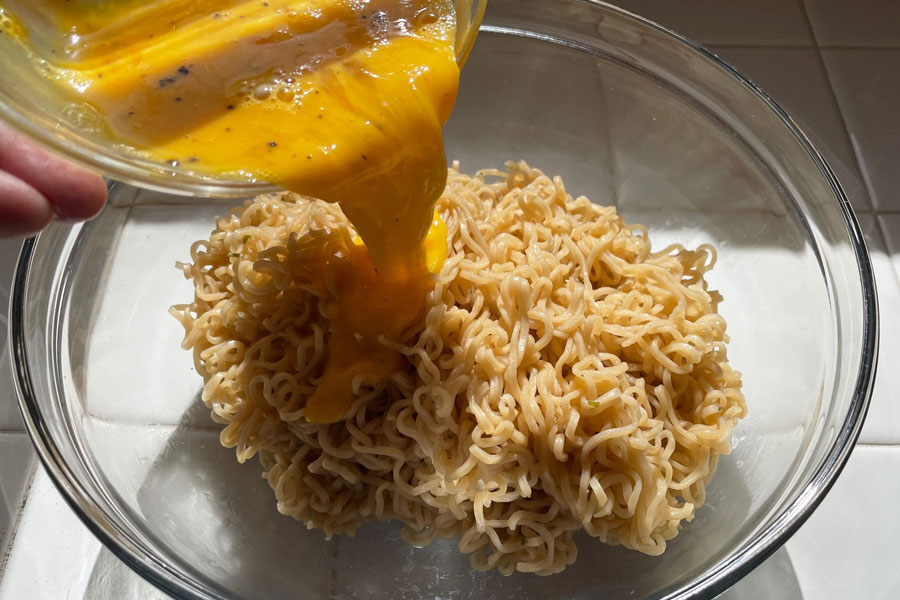
Next divide up the noodles and distribute into round containers, like my take-out ones here, or use ceramic ramekins if you have them.
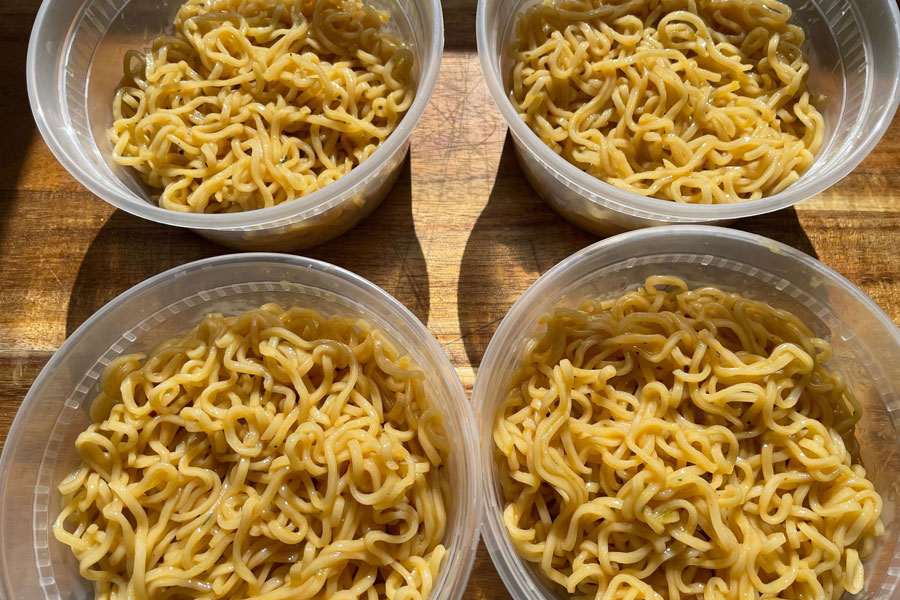
Cover with plastic wrap and weigh each of them down with cans or anything else that will fit the size of the containers and over the noodles.
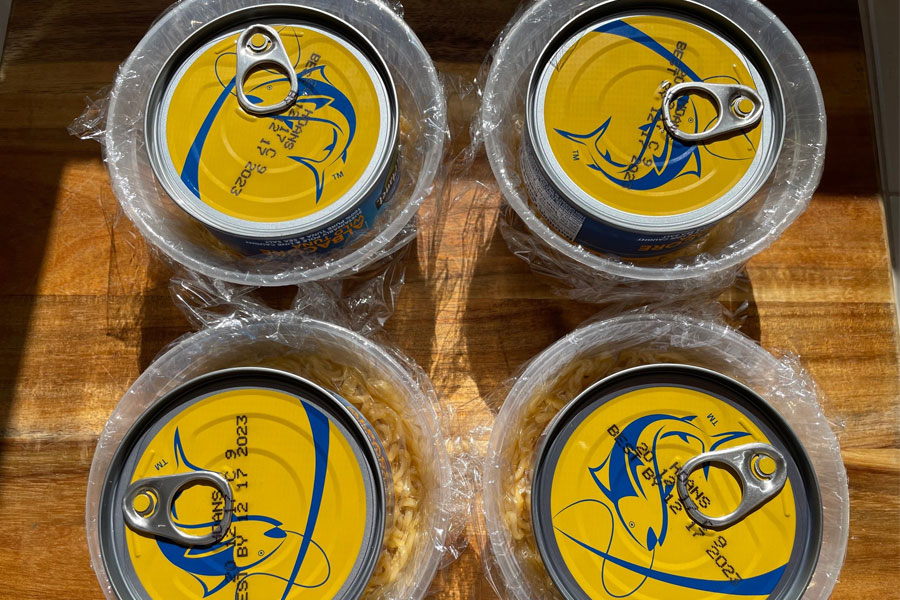
Then you just chill them in the fridge for about 20 min. and there are your ramen “buns”!
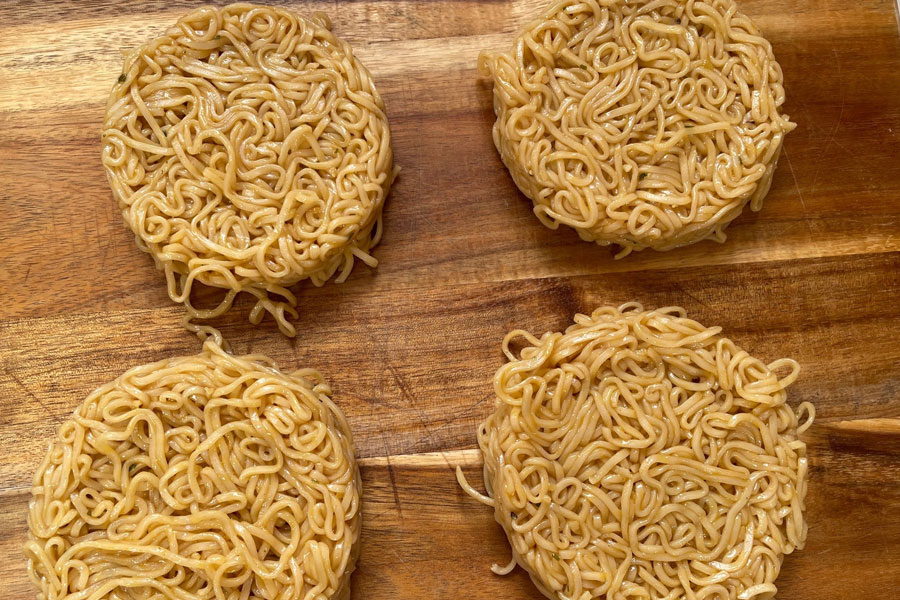
The ramen buns go right on the griddle along with your hamburgers.
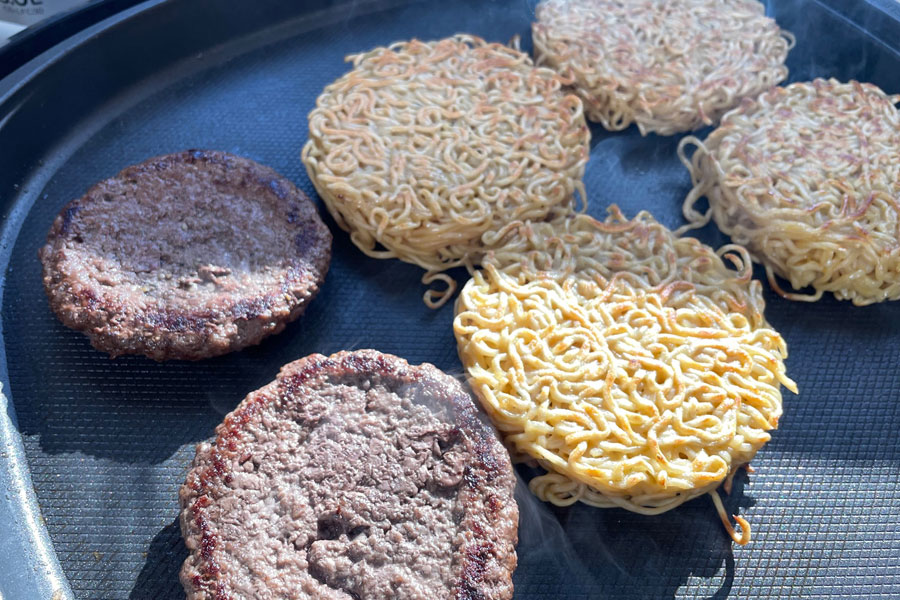
If you look at Mr. Shimamoto’s recipe, you’ll see that he makes a special sauce (I think it’s based on ketchup and sriracha). I made my own and it worked pretty well—here’s my Ramen Burger. And my personal review? I think I’d rather have bread buns.
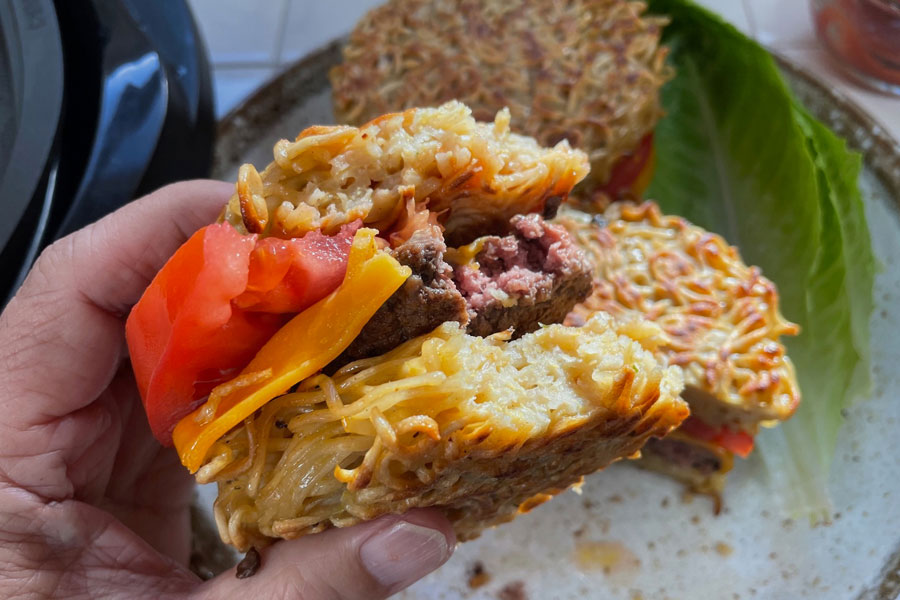
With my cup ramen taste testing, I couldn’t do what most people do and compare different Japanese brands of instant ramen because I’m not allowed to show other branded products on this blog. But what I can do is talk about some of the cup ramen products from other countries. It’s surprising to see how other countries interpret ramen—it goes to show you how popular ramen has become around the world.
Korean Gomtang
Koreans really love their ramyeon too. This mild and silky version is made from beef bone broth and brings out the gomtang flavor perfectly, which is a soup made with various beef parts like ribs, oxtail, ox head and brisket. This is slow simmered on a low flame, which produces its milky color and rich taste.
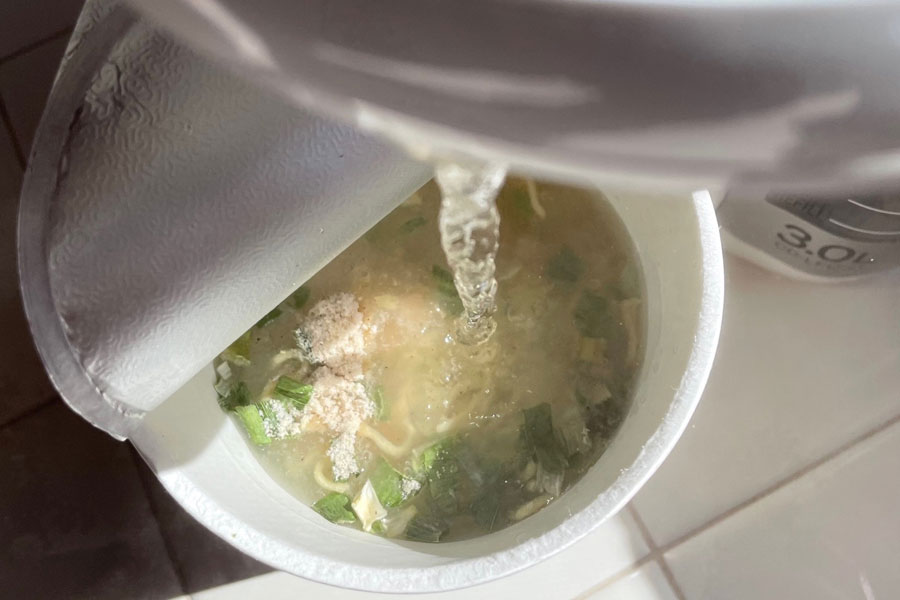
Although really simple with no extra ingredients, this was one of my favorites during this taste test. I love Japanese ramen best, but for an instant cup ramen, you can’t beat gomtang for satisfaction. The deep richness of the broth is all you need for this ramyeon.
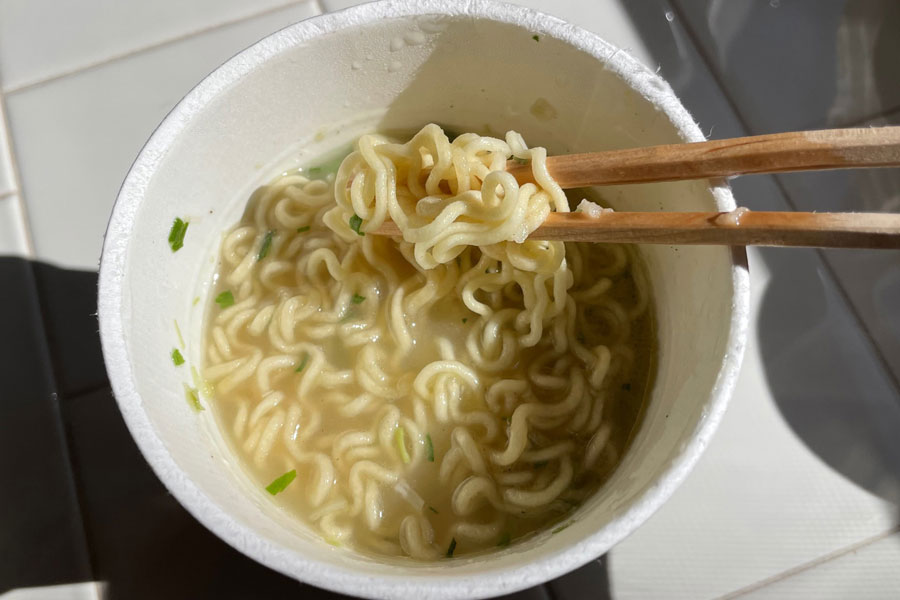
Korean Spicy Ramyeon
From the milky mild broth of gomtang to the flaming red kick-butt of Korea’s most popular instant ramen, this familiar red and black cup ramen is not for the faint hearted. You have to be able to handle your spicy food to enjoy this one.
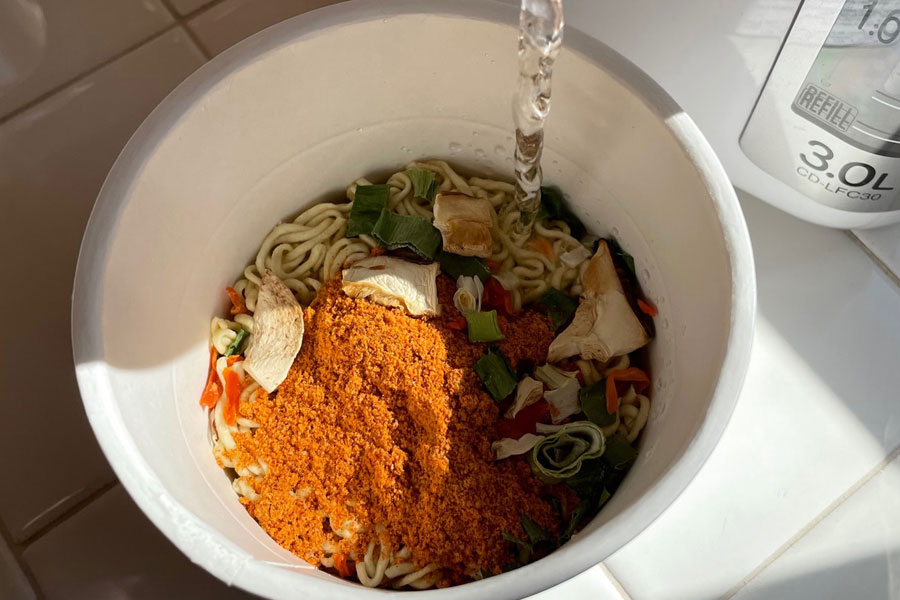
This is the top-selling ramen in South Korea, and I can understand why. It’s generously filled with dried ingredients, like the large slivers of mushrooms that you see here. Plus it’s spicy enough to satisfy all those fans who love getting their tongues burnt. I’m getting too old for this.
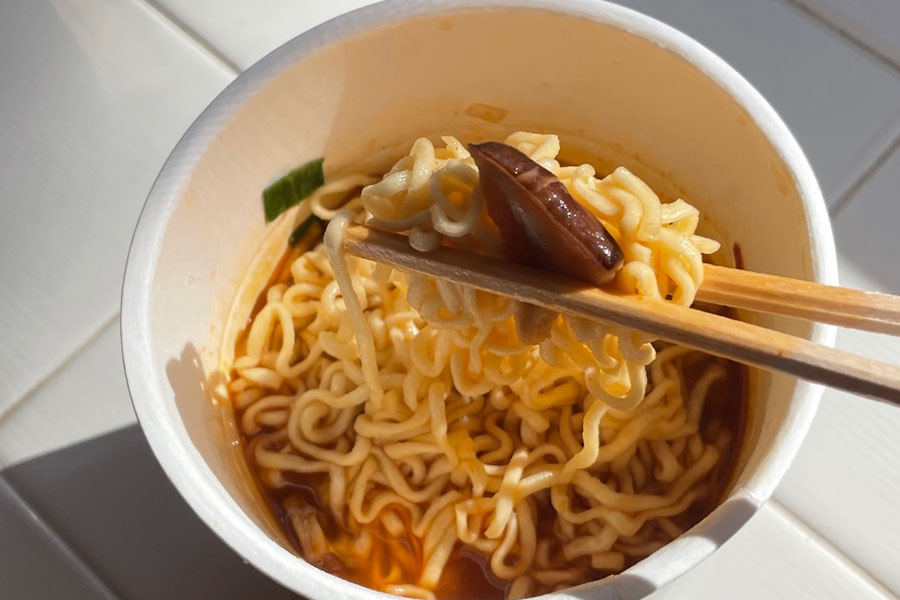
Taiwanese Beef Noodle Soup
Talk about a meal in itself—if you go to a Chinese restaurant that serves this classic dish, the beef is tender and the broth has been simmered for hours to give it that deep beef stock flavor. This instant ramen version tried hard to replicate it, but turned out to be my least favorite of the bunch.
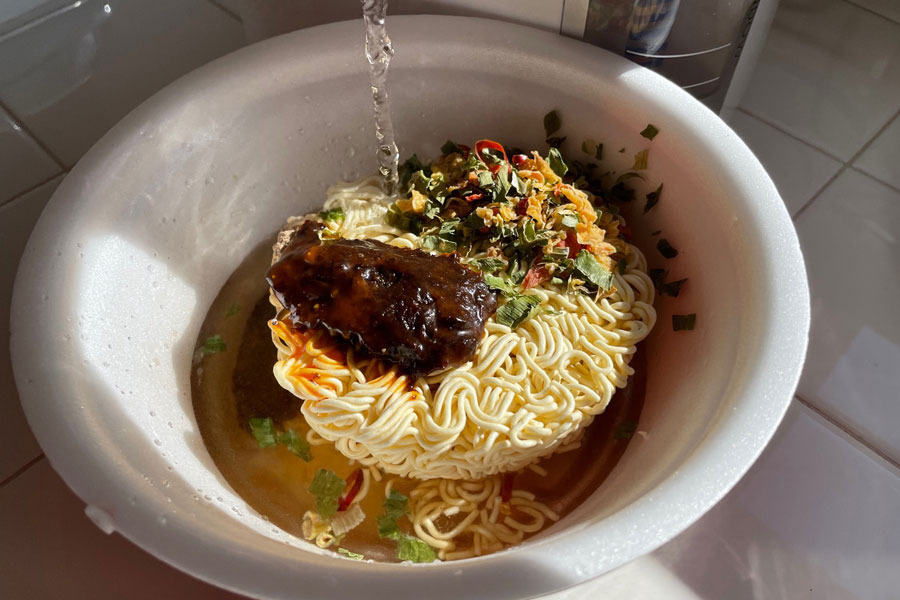
I may have put too much not water in, but there was no indicator line so I was just guessing. To me, it had a funky sort of smell that I personally didn’t like. My wife said it smelled like how beef noodle soup is supposed to, so what do I know?
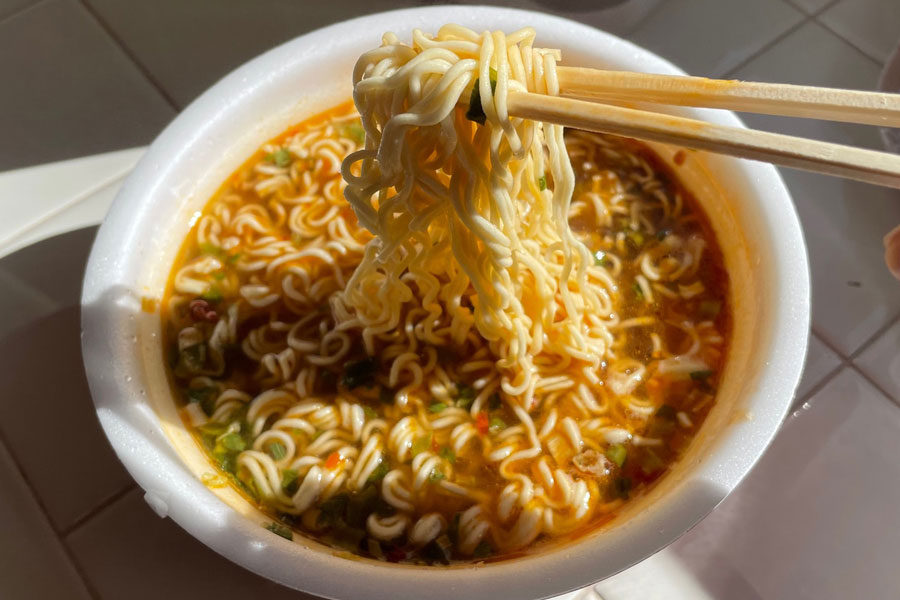
There actually was beef in this. See? Look closely or you’ll miss it…
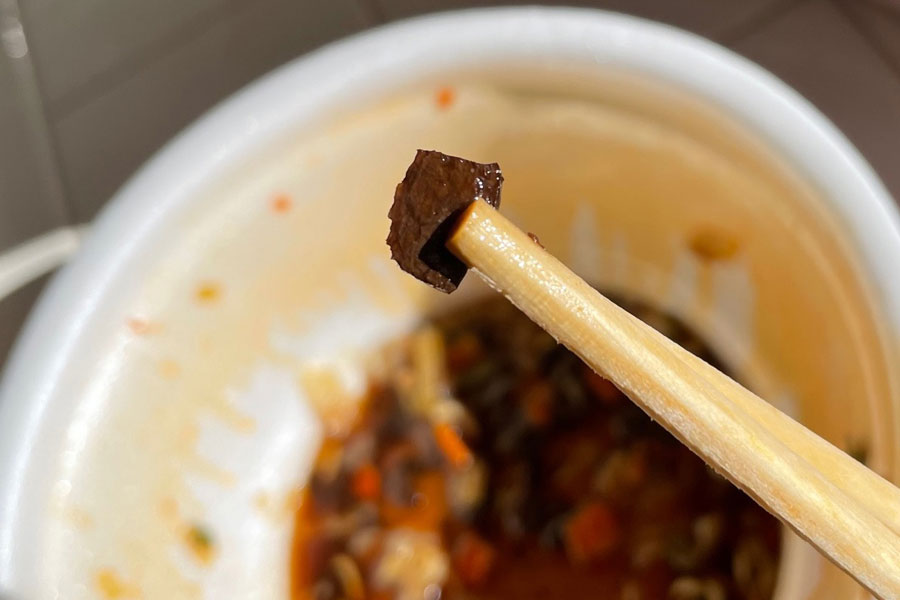
Indonesian Fried Noodles
I found an Indonesian version of the Japanese yakisoba, or stir-fry noodles. It’s prepared like all the instant fried noodles, first by pouring in hot water to reconstitute the noodles, then draining it. Then you add the flavor packets (this one came with 5 of them), and stir. Plus it had its own little fork!
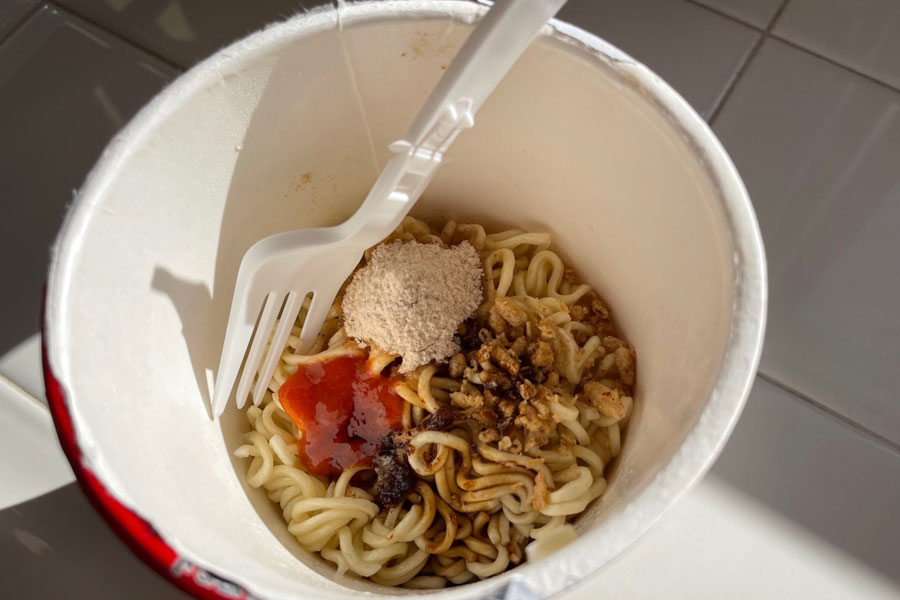
An interesting explosion of flavors. Maybe too much? I mean, after no less than 5 flavor packets it came out a little salty. But it did have that sautéed after-taste to it, which surprised me. In case you’re interested, the packets were: soy sauce, chili sauce, seasoning oil, fried onion paste and seasoning powder.
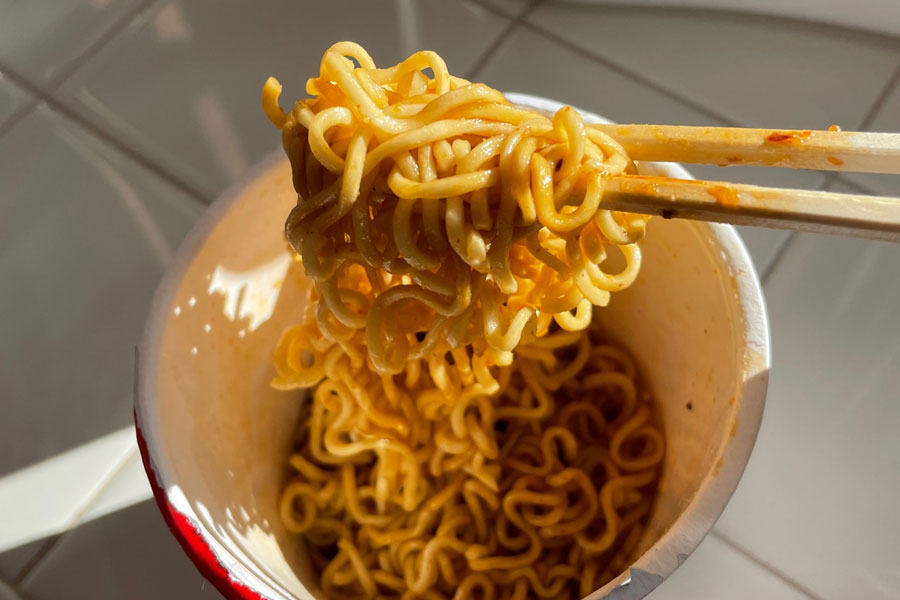
Japanese Cup Noodles
This brand you all know—the company that started it all. Thanks to Mr. Momofuku Ando, who invented the original Cup Noodle, the world can have their ramen anytime, anywhere. I’m eating their Black Pepper Crab flavor, which was stocked with decently sized chunks of imitation crab and veggies. One thing to note is that of all the cup ramens that I tested, this was the only one that did not have any flavor packets. Mr. Ando’s method is to pre-load the seasoning and leave a pocket of airspace underneath the noodles. As hot water is poured, it can circulate thoroughly from the bottom, ensuring that the noodles soften evenly.
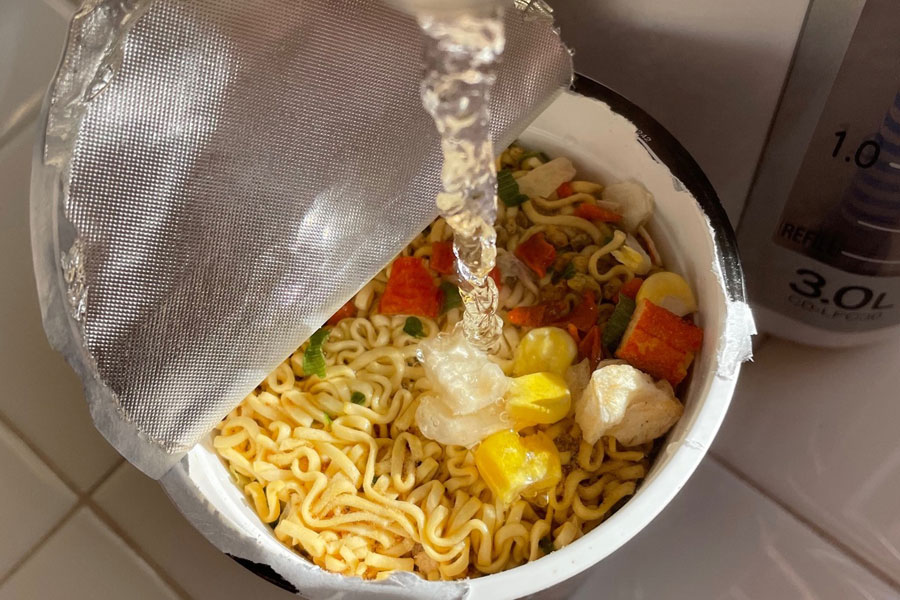
Apparently there are 17 varieties of Cup Noodle on the market in the U.S., and there are people who have tried them all. I’m not that huge of a fan, but this Black Pepper Crab version was very good. It tasted like crab! And it didn’t have any of those weird spongy egg bits that I’m not a fan of. Notice the ramen noodle itself—this was the only one that had a flat, ribbon-like shape. The better to remain al dente, perhaps?
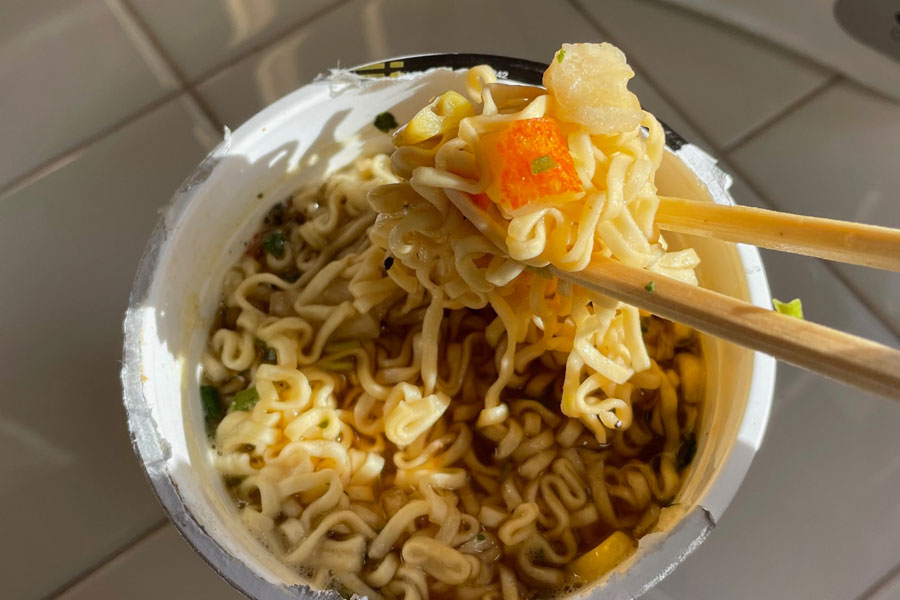
After doing this, I realized there are so many more kinds of instant ramen from around the world. I heard there’s a Mexican Tapatío Cup Ramen too; I’ll have to try that one! Do you know others?
I’d like to thank my partner, without whom I wouldn’t have been able to cook each one so efficiently during this test—my Zojirushi Water Boiler. Seriously, it deserves a raise. If you want to read more about my thoughts on ramen, see my past post on this great food.
Keep on slurpin’!
Products used in this post: Micom Water Boiler & Warmer CD-LFC30, Gourmet Sizzler® Electric Griddle EA-DCC10
Please note that these recipes were not tested by Zojirushi America.
All images by Bert Tanimoto ©2021

Leave a Reply